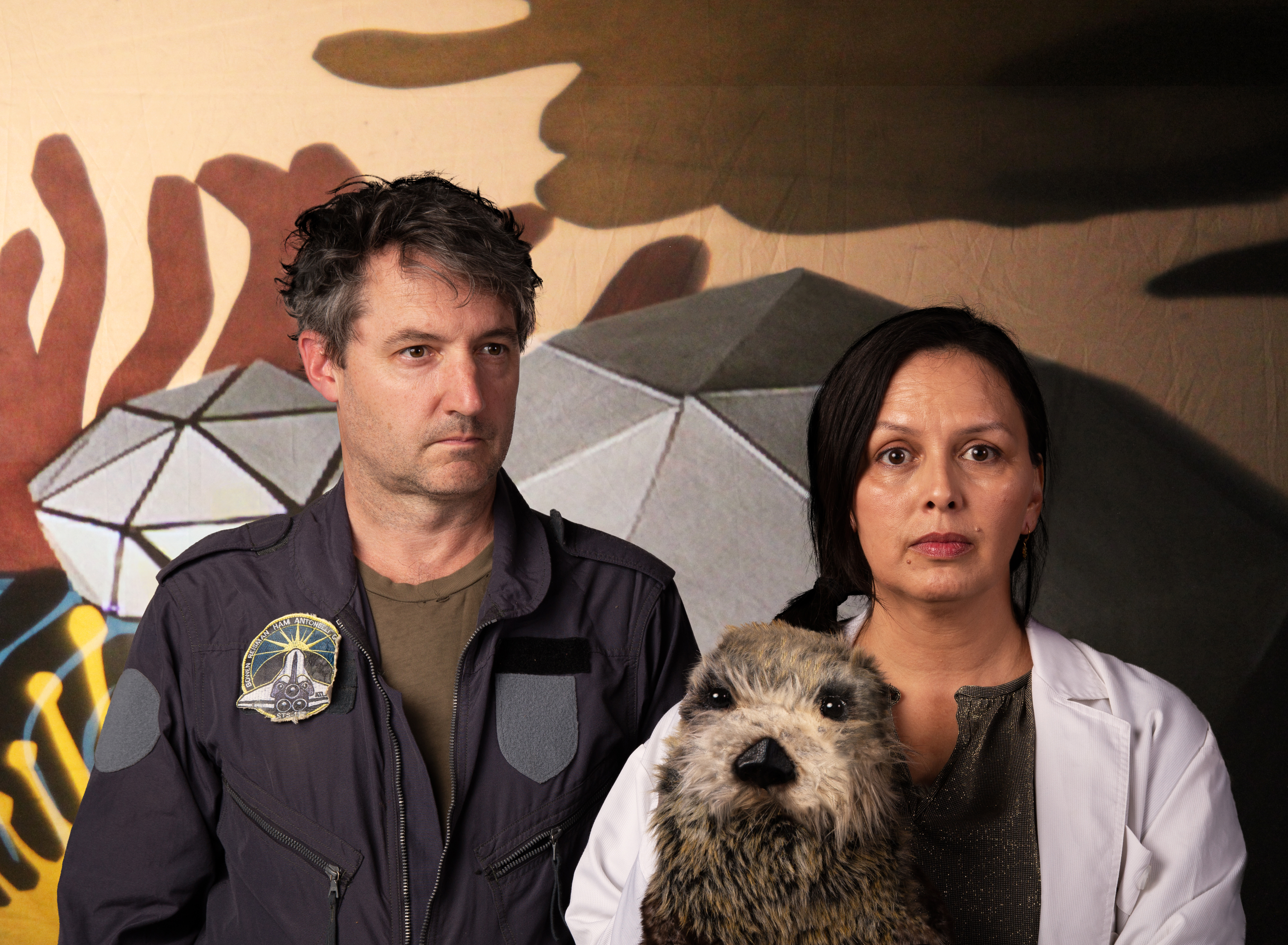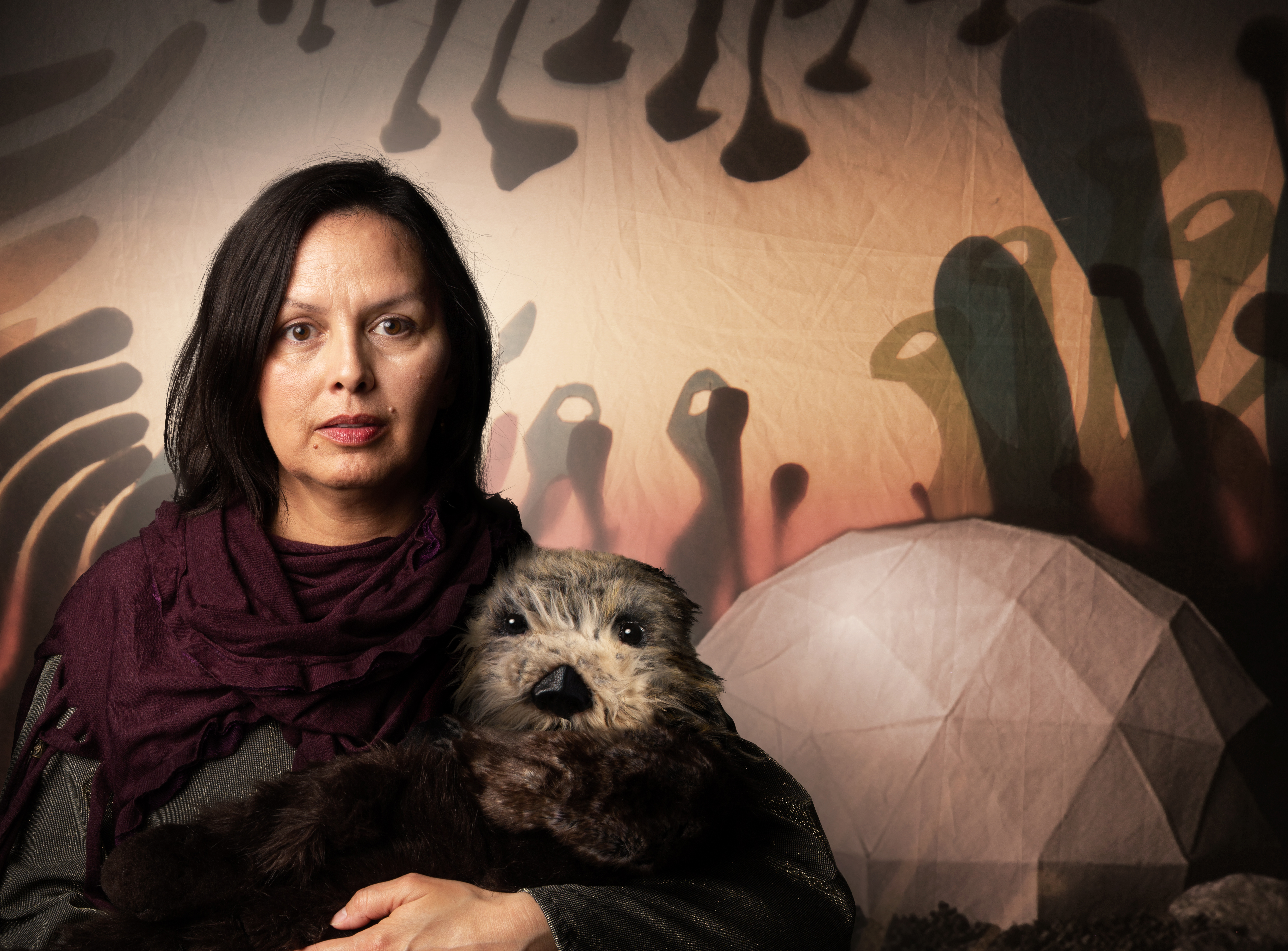
The year is 2178. The last woman on earth is haunted by a question: Do humans deserve a second chance? Granted, it didn’t work out great the first time. Homo-sapiens’ insatiable appetite for earth’s resources has created optimum conditions for a deadly fungal plague that has wiped out all life forms. All but three that is – two humans (Adam and Ever – biblical reference intended) and one sea otter, locked inside a now decrepit biodome. The fate of the human race rests on the success of the Ark project; a capsule that will carry mankind’s last remaining offspring to a far-off planet. But the question persists: Should we start this whole messy human existence business again?
This is bleak subject matter, but it is delivered with compassionate humour and creative panache. The enduring message of the show is, in fact, one of resilience and hope.
The show represents a meeting of creative minds. This is a multi-disciplinary endeavour, it blends shadow theatre, puppetry, live video streaming and performance. The beautiful shadow theatre backdrops, courtesy of Mind of the Snail Puppet Co. stole the show for me. It’s low tech at it’s most deliciously creative. Exquisite hand-drawn scenes were beamed on to the stage’s backdrop via, what must be, overhead protectors. This allows the team to conjure up a whole world beyond the confines of the stage. Worlds filled with psychedelic sunsets, sinuous fungal forms and an ominous, multi-eyed spectre. Shadows from the actors and puppets interact with these delightfully zany projections in ingenious ways. The result is enchanting.

There are, however, some wrinkles in the piece. The main characters aren’t quite as vibrant as their backdrop. At times I felt that the pair were mere receptacles for the philosophical agenda of the play. I couldn’t get a sense of any distinct or nuanced personalities. The result was, despite a couple of touching moments, that I didn’t feel invested in Adam and Ever’s relationship or their personal plight. In addition the Garden of Eden metaphor seemed tangential or at least under-developed. (A decimated earth and withering bio-dome complex could hardly be described as “paradise” and the incarnation of the “satanic snake” appeals to Ever’s compassion and love, not her greed and vanity). The play also seemed to be miss-paced, with long repetitious set-up scenes and then a rushed defining-moment conclusion.
Despite these few blemishes “A Brief History of Human Extinction” is well worth your perusal. On balance, the industrious staging techniques, effervescent visuals, charismatic puppetry and interesting moral conundrum make for an enticing show. In the end, we’re left pondering the assertion that, in order to live we must accept change.
Get your tickets here!
– MG
